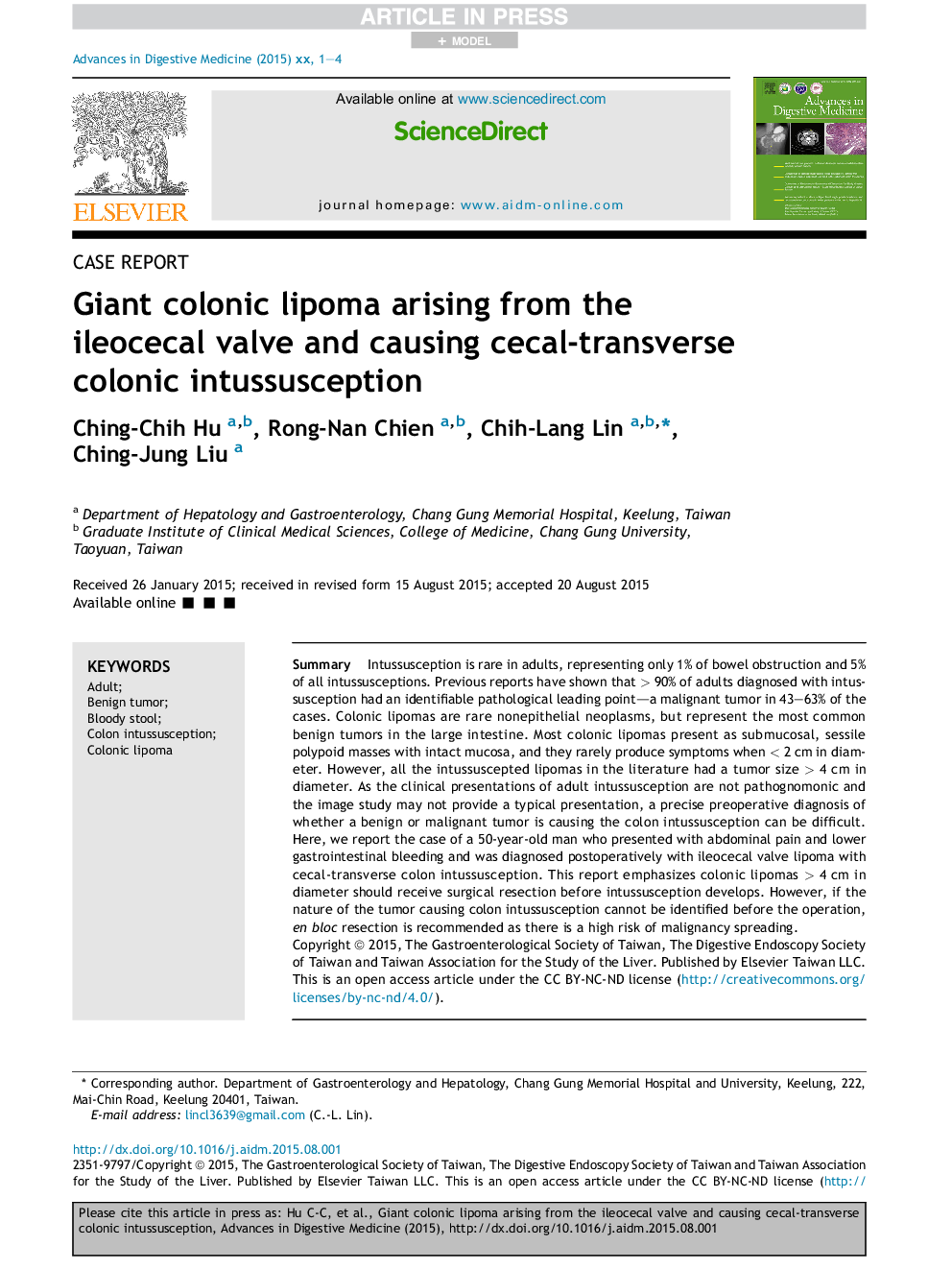| Article ID | Journal | Published Year | Pages | File Type |
|---|---|---|---|---|
| 8724530 | Advances in Digestive Medicine | 2016 | 4 Pages |
Abstract
Intussusception is rare in adults, representing only 1% of bowel obstruction and 5% of all intussusceptions. Previous reports have shown that > 90% of adults diagnosed with intussusception had an identifiable pathological leading point-a malignant tumor in 43-63% of the cases. Colonic lipomas are rare nonepithelial neoplasms, but represent the most common benign tumors in the large intestine. Most colonic lipomas present as submucosal, sessile polypoid masses with intact mucosa, and they rarely produce symptoms when < 2Â cm in diameter. However, all the intussuscepted lipomas in the literature had a tumor size > 4Â cm in diameter. As the clinical presentations of adult intussusception are not pathognomonic and the image study may not provide a typical presentation, a precise preoperative diagnosis of whether a benign or malignant tumor is causing the colon intussusception can be difficult. Here, we report the case of a 50-year-old man who presented with abdominal pain and lower gastrointestinal bleeding and was diagnosed postoperatively with ileocecal valve lipoma with cecal-transverse colon intussusception. This report emphasizes colonic lipomas > 4Â cm in diameter should receive surgical resection before intussusception develops. However, if the nature of the tumor causing colon intussusception cannot be identified before the operation, en bloc resection is recommended as there is a high risk of malignancy spreading.
Related Topics
Health Sciences
Medicine and Dentistry
Gastroenterology
Authors
Ching-Chih Hu, Rong-Nan Chien, Chih-Lang Lin, Ching-Jung Liu,
